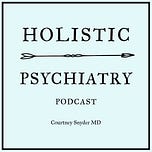Our limbic system (commonly called the lizard brain) plays an important role in our safety. If it’s over-functioning, however, we can feel chronically unsafe.
Previously, I discussed how the autonomic nervous system (ANS) puts us into fight, flight, or shut down when we feel threatened. The ANS operates largely outside our brain; however, it communicates with our limbic system, which is in the brain. In this newsletter:
What is the limbic system, specifically the amygdala, and how does it keep us safe?
What symptoms and conditions occur when the amygdala is over-functioning?
What does the limbic system have to do with high immune reactivity and mast cell activation, multiple chemical sensitivity, and electromagnetic hypersensitivity?
Are some of us born with an overactive amygdala?
What environmental inputs can lead to limbic system dysfunction?
How can we take advantage of neuroplasticity to address this dysfunction, feel safe in our bodies and environments, and become less reactive to food, chemicals, light, loud sounds, EMF, and other environmental inputs?
What Is the Limbic System?
The limbic system is a group of interconnected structures deep inside the brain (and just above the brainstem) that govern our emotions, motivation, sense of smell, and behavior. Evolutionarily, the limbic system is considered the oldest part of the human brain. It has been identified in fish, amphibians, reptiles, and early mammals.
The structures include the thalamus, hypothalamus, basal ganglia, cingulate gyrus, hippocampus, which consolidates short-term memory into long-term memory, and last but most certainly not least, the amygdala.
The Amygdala
a major processing center for emotions, especially fear, anxiety, and rage.
helps identify potential threats and trigger appropriate reactions, such as the "fight or flight" response.
stores emotional memories, especially those related to stress and fear.
helps with social interactions and interpreting information about others.
involved in learning by fear, and is necessary for acquiring both active and passive avoidance of conditioned responses.
assigns value to objects and activities; plays a role in making judgments, including social, moral, and aesthetic judgments.
What is Limbic System Dysfunction?
This is when neuronal pathways have been reinforced from repeated threatening inputs. What is perceived as threatening starts to become generalized.
This can look like:
high anxiety and even obsessive-compulsive symptoms, such as contamination fears, disordered eating, body dysmorphia
hyper-vigilance or being excessively alert to anything perceived as a threat
excessive fear related to:
one’s symptoms
one’s body
food, medications, or supplements
environmental exposures, such as chemicals, mold toxins, or EMF
Because of the interconnection between the central nervous system and our immune system, once someone has developed limbic system dysfunction from toxic exposure or trauma, they can become hyper-reactive to a wide range of stimulation, including light, sound, smells, foods, supplements, medications, chemicals, and electromagnetic fields. As you can see, this becomes self-perpetuating. As a person has more reactions, often in the form of mast cell activation with its wide range of symptoms, they become more vigilant and avoidant to try to prevent symptoms. This adaptive response, however, further reinforces a hyper-vigilant limbic system.
What Does It Feel Like?
I can speak to this personally, as I had limbic system dysfunction from mold toxicity (from a home that had water damage) and then later in a new Smart house with high radio frequencies and dirty electricity. Even before I knew I had mold toxicity and was being exposed to mold, my thoughts repeatedly landed on themes around safety. I knew something was causing me to have severe fatigue and headaches, but I didn’t know what. “I shouldn’t eat that, I shouldn’t go there, I shouldn’t, I can’t, I better not.” I thought if I could control things, I would be fine.
Everything and everyone felt “too much.” It was hard to be with people. When our body feels threatened, we are not at rest, digest, and connect. It’s difficult to be present. That’s a problem because the less we connect with others, the more room in our minds for rumination and reinforcing those fear pathways.
My symptoms of pain, fatigue, and anxiety caused by mold toxins and EMF were helped and made worse by the limbic dysfunction that developed. If you’ve ever been “limbic,” you know it’s all-consuming and exhausting, not just for you but for your spouse, partner, children, and close friends.
Can We Be Born with Limbic System Dysfunction - “Wired For Danger?”
RCCX is a gene module (cluster of genes) that appears to be at the foundation of many psychiatric conditions and complex chronic health conditions, such as mast cell activation syndrome (MCAS), chronic fatigue syndrome, chronic inflammatory response syndrome (CIRS), and postural orthostatic tachycardia syndrome (POTS)
The RCCX gene module includes a gene for hypermobility (especially bendable or double-jointed), a gene for 21-hydroxylase - involved in stress hormone pathways, and a gene related to our immune response and autoimmunity. Hypermobility is a red flag but not a requirement.
A weakness in 21-hydroxylase can result in higher androgens (such as testosterone) in utero and thus impact the developing brain, specifically the amygdala. Studies have found that those with hypermobility have a larger than normal amygdala, which fits RCCX theory. This would suggest that many of us come into the world with an amygdala that already has us on high alert. The disadvantage of the resulting global sensitivity is the greater potential for health consequences. However, there can also be advantages, including being highly intuitive, observant, creative, and empathic.
Another seeming result of high androgen exposure in women during development is a finger length ratio more typical of men (the ring finger is longer than the index finger when looking with the palms up). Perhaps the male finger length ratio in women and girls suggests a vulnerability to developing limbic system dysfunction.
Neuroplasticity - Friend or Foe?
Neuroplasticity is the incredible ability of our neurons to form new connections and modify the strength of existing connections. More simply put, it is the ability of our brain to rewire itself. Our experiences, thoughts, and behaviors drive these neuronal connections. As you’ll see, neuroplasticity can work against us and take us into or further into limbic system dysfunction, or it can help us find our way out of limbic system dysfunction.
How Do We Develop Limbic System Dysfunction?
I do suspect that many of those who go on to develop limbic system dysfunction already had a vulnerability from the start; however, environmental inputs - exposures or trauma - can reinforce those neuronal pathways of fear and avoidance.
Such experiences could start as early as the first three years of life. Perhaps one’s attachment experiences left them feeling unsafe and uncertain that the world was safe. There could have been trauma. Over time, toxins could have left the body feeling chronically threatened. We see this with biotoxins, especially from mold and Bartonella, but also with Lyme and other co-infections. We also see this with high EMF exposure and chemical exposures.
Though we call it dysfunction, hypervigilance can lead people to their answers. Had I not been “limbic,” I probably wouldn’t have discovered I had mold toxicity, but once I did, I had to teach my brain and body how to feel safe again,… perhaps even safe for the first time.
Limbic System Retraining
Just as pathways of fear and vigilance can get reinforced over time, so can pathways of safety and well-being. Limbic system retraining programs are structured programs with exercises, education, and support to help retrain the limbic system. They are incredibly helpful for most people, even those with an active “threat” like mold toxins in their body. That doesn’t mean that actual external threats don’t need to be addressed. Just as I wouldn’t recommend someone stay in a traumatizing relationship, I also wouldn’t recommend someone stay in an environment in which they are getting significant exposure to mold toxins.
Limbic system retraining programs can be done at home online. Common ingredients include raising awareness of thoughts and triggers, interrupting those thoughts (with or without movements), and a visualization or mood elevation. All of these require practice. The three programs that I have patients look into and which many of us who treat complex illness have the most experience with are:
Though these vary somewhat (DNRS is the most structured, Gupta brings in meditation, and Primal Trust brings in more vagal nerve interventions and trauma-informed practices), they are all effective. It comes down to fit and which program the person feels the most drawn to and, thus, will be most inclined to do. While an hour a day may be recommended by the programs and maybe most helpful, it does not have to be “all or none.” Even ten minutes a day to start can still be helpful.
For patients who are so sensitive that they can not tolerate any supplements, binders (for toxins), or medications to calm down their immune and/or nervous system, limbic system retraining and vagal nerve interventions for eight weeks usually can allow them to move forward.
Again, because the immune and central nervous systems are so interconnected, as the limbic system calms down, so do mast cells, inflammation, immune reactivity, and the many symptoms that they can cause.
Who Benefits From Limbic System Retraining
Limbic system retraining programs - specifically the Dynamic Neural Retraining System, not surprisingly, were first used for Multiple Chemical Sensitivity (MCS), Chronic Fatigue Syndrome (CFS), Electromagnetic Hypersensitivity Syndrome (EHS), and Fibromyalgia. They are also used for Mast Cell Activation Syndrome (MCAS), Chronic Inflammatory Response Syndrome (CIRS), mold toxicity and other biotoxin illness (Lyme and it’s coinfections), Post Traumatic Stress Disorder (PTSD), Obsessive Compulsive Disorder (OCD) and more generally for:
Those who have experienced physical, psychological or emotional stress and trauma and who are now suffering from a chronic health condition
Those with chronic depression and/or anxiety
Those with chronic pain
How to Help Children Limbic System Dysfunction
Older children and teens can benefit from doing limbic system training program with a parent. My daughter and I did DNRS together. Our conversations about it were reinforcing and still shape how we each think about how to support our neurophysiology.
For younger children, following the steps may be more difficult. Programs like Brain Tap and Dr. Stephen Porges’ “Safe and Sound” program can be very helpful.
Honoring Our Limbic System
Before I close, I would again point out that our amygdala - beyond keeping us safe - is the source of many of our gifts - our sensitivity, intuition about people, and inner knowing. Those of us who come into the world “wired for danger” are also wired to see things others may not see and feel things others may not feel. We can use such gifts to serve a higher good.
Whether or not you struggle with limbic symptoms, I hope something here helps you appreciate your limbic system so that it can help you find peace and purpose.
Until next time,
CourtneySnyderMD.com
Medical Disclaimer:
This newsletter is for educational purposes and not intended or implied to be a substitute for professional medical advice, diagnosis, or treatment for either yourself or others, including but not limited to patients that you are treating (if you are a practitioner). Consult your physician for any medical issues that you may be having.











